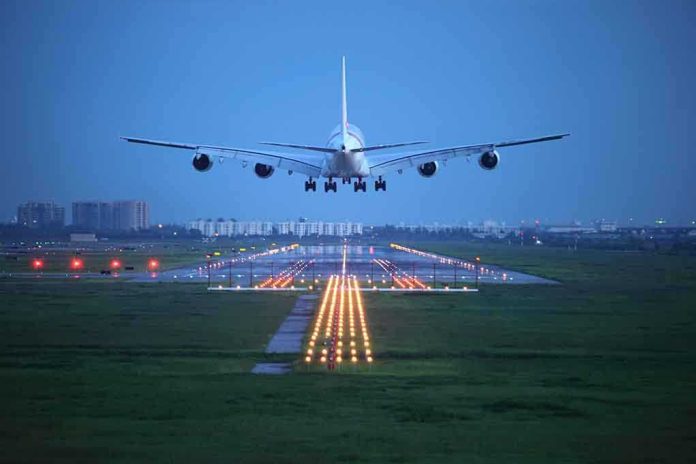
In a concerning incident, passengers aboard an American Airlines flight were left reeling after sickening fumes filled the cabin, raising alarms about air quality and safety.
Story Highlights
- Sickening fumes force an American Airlines flight to return to LAX.
- Passengers and crew report feeling unwell, pilots resort to oxygen masks.
- No hazardous substances found despite the alarming symptoms.
- The incident echoes a similar event involving Delta Airlines earlier that week.
Fume Incident Forces Emergency Return
On October 14, 2025, American Airlines Flight 274, bound for New York’s JFK from Los Angeles International Airport (LAX), made an emergency return shortly after takeoff. Passengers and crew reported a strong odor and fumes in the cabin, prompting pilots to don oxygen masks and land back at LAX safely. Seven passengers required medical evaluation, although none needed hospitalization. The aircraft underwent inspection and was taken out of service for further checks, with no hazardous substances detected.
This incident follows a similar event with Delta Airlines earlier in the week, raising questions about cabin air quality and safety protocols. The rapid response from the crew and emergency personnel highlights the severity of the situation and the need for stringent safety measures in place. In light of these events, scrutiny of airline safety protocols and passenger health standards is likely to intensify.
Understanding Fume Events in Aviation
Fume events in aviation are neither new nor uncommon. For decades, incidents involving smoke, oil fumes, or other contaminants entering the aircraft’s ventilation system have been reported. These events can sometimes lead to acute symptoms among passengers and crew. Despite this, regulatory scrutiny and industry concern have only intensified recently, spurred by high-profile incidents and health complaints from flight crews. The debate over the adequacy of current air filtration and detection systems remains ongoing.
The occurrence of such incidents on major transcontinental routes operated by leading airlines like American Airlines underscores the urgency of addressing these safety concerns. While the aircraft was eventually inspected and passengers rebooked on a replacement flight, the incident reflects broader issues within the industry. The need for improved detection systems and transparent reporting of air quality incidents is becoming increasingly apparent.
Regulatory and Industry Response
The incident has prompted a review by both American Airlines and possibly the Federal Aviation Administration (FAA). While American Airlines has issued a public apology, the long-term implications for the airline could include increased regulatory scrutiny and potential changes to maintenance or air quality monitoring protocols. The airline industry as a whole may face renewed pressure to review and enhance air quality monitoring and emergency protocols.
The economic, social, and political impacts of such incidents are significant. From the costs associated with emergency responses to heightened public concern about in-flight safety, the ripple effects are extensive. As this issue gains traction, there might be calls for regulatory reviews or legislative action to establish stricter cabin air quality standards.
Sources:
Travel and Tour World (industry analysis)

















